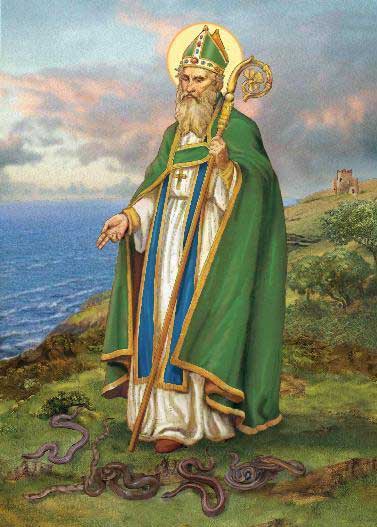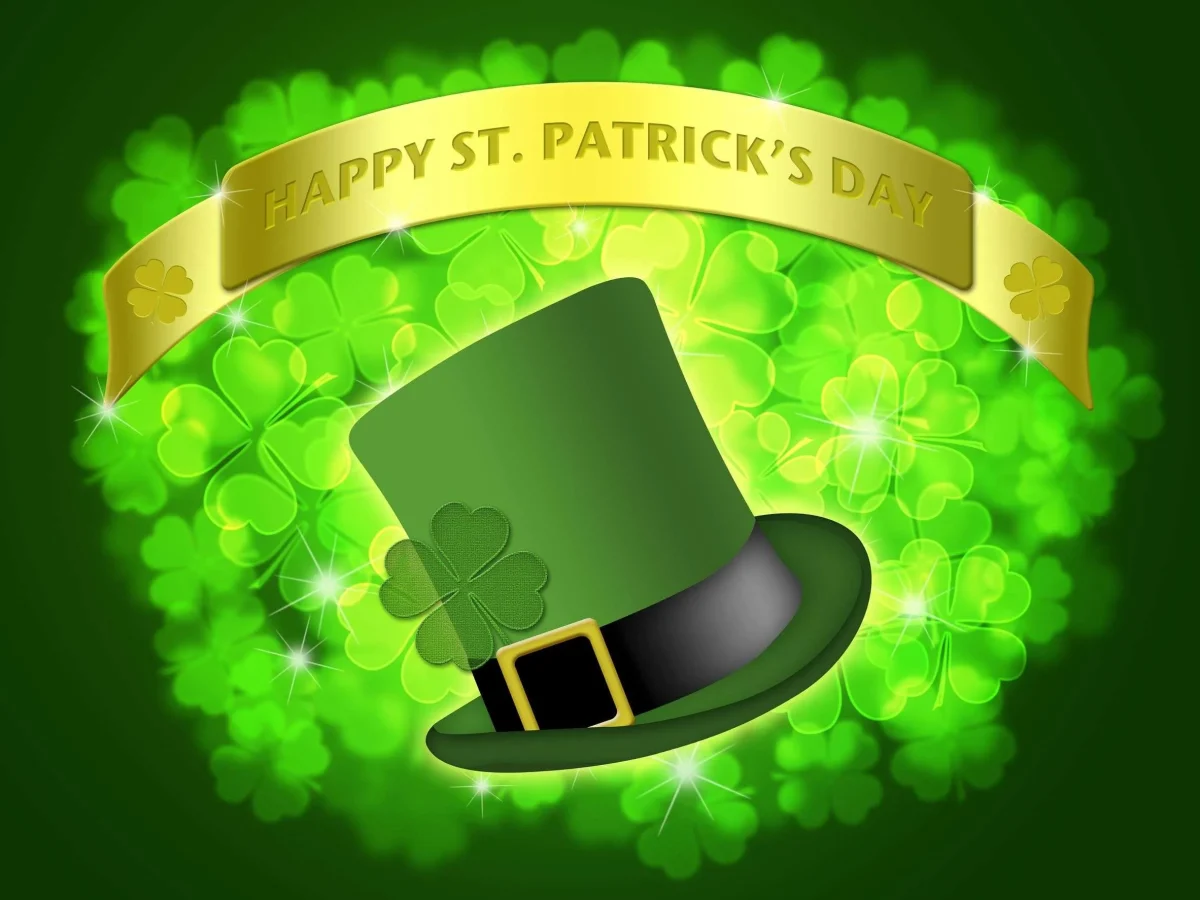On March 17, people decked in green and sporting shamrocks from across the world gather to celebrate Irish heritage in the name of Saint Patrick. However, this holiday was not always linked to green decorations or corned beef and cabbage, instead, it consisted of religious feasts and gatherings to celebrate the patron saint of Ireland.
Saint Patrick was born in Roman Britain during the 4th century. At age 16, he was kidnapped and taken from his home in Britain to Ireland. While he did manage to escape, he later came back in 432 CE to convert the Irish to Christianity by establishing schools, monasteries, and churches. After his death on March 17, 461 CE, the people of Ireland began to celebrate him with religious festivals and feasts.
Along with the celebrations, came myths and legends regarding Saint Patrick. These include him driving the snakes out of Ireland. While these reptiles are not native to Ireland, some believe the myth addresses him converting the Irish to Christianity and driving out those who did not hold the same religious beliefs. Another myth regards the significance of the four-leaf clover, which is widely said to represent luck and relate to Saint Patrick himself. However, Saint Patrick used the three-leaf clover, or the shamrock, to represent the Trinity while explaining Christian beliefs.
As the Irish began to immigrate from Ireland to the United States, St. Patrick’s Day was introduced to North American soil. Soon the celebrations which centered around religion, became a more secular celebration of Irish heritage. The celebrations included many of the traditions still practiced today including the consumption of corned beef and cabbage, dyed foods, and wearing green. These modern twists were adopted by the Irish only for the benefit of tourism.
Many towns and cities across the United States commonly host St. Patrick’s Day parades, however, in the early years of Irish immigration, the cities with larger populations often held larger celebrations. The first North American city to host a parade in honor of St. Patrick’s Day was Boston in 1737. The next city to join the common practice was New York City twenty-five years later, in 1762. In addition to the parades, Chicago has dyed the river green in celebration of St. Patrick’s Day since 1962.
The color green is often associated with St. Patrick’s Day and Irish culture, however, this was not always the case. Initially, the color associated with St. Patrick’s Day, and Ireland as a whole, was blue instead of green. This was even displayed on their old flags and can still be found on some remaining. Once the shamrock was introduced as the national symbol in the 18th century and it caught so much attention, green became Ireland’s signature color.
In addition to this color controversy, one of the most beloved mythical creatures relating to St. Patrick’s Day was originally depicted as wearing red instead of green: the leprechaun. Tales of leprechauns originated in the 8th century when there were legends of small water beings that would dwell among the Celts in small caves or hollow tree trunks. These beings are the counterparts to fairies and are typically pictured as bearded men, dressed in a coat and hat.
The name “leprechaun” is said to have come from the word “luchorpan” which translates to “a very small body” and fitting for a creature reported to be merely 2-3 feet tall. The name could be linked to “leath bhrogan” as well which roughly translates to “shoemaker”, as they are often said to be the shoemakers for the fairy population. This is also the profession from which the iconic pot of gold stems.
While St. Patrick’s Day may come with many myths and legends, it is interesting to see how it has evolved from only religious services to a secular holiday even people without connections to Ireland celebrate. With a clear answer to the ways the holiday began, the question now becomes: how will St. Patrick’s Day continue to change as society does as well?

















